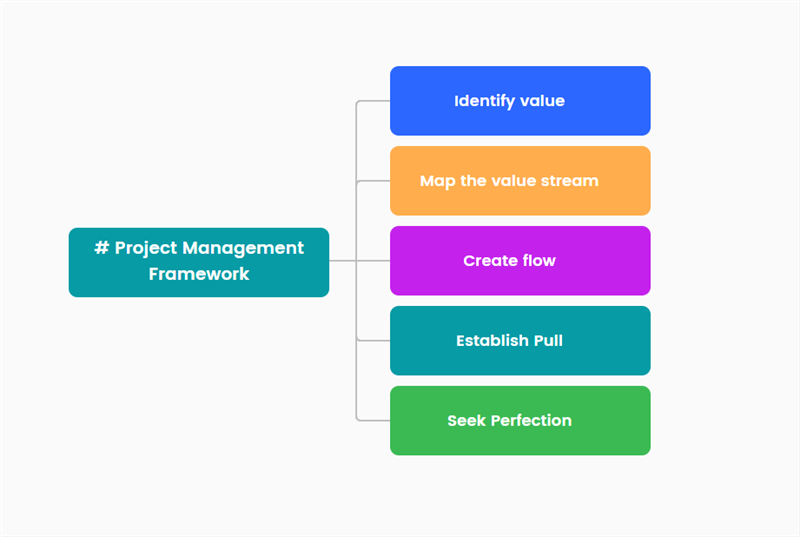Large systems require careful monitoring and constant coordination, or they might descend into the chaos that prevents anything from being completed. On the other hand, they still need a certain degree of flexibility in order to solve difficult problems and make the best use of the available skills and resources.

Project Management Framework
To balance those needs and define clear principles that can be relied on to assist with decision-making, businesses typically adopt a project management platform and migrate their business processes onto it. Thanks to this organizational change, they can avoid losing track of key objectives, falling into bad habits, or wasting time on tasks that are not intrinsically tied to the desired outcomes.
There are numerous approaches to project management and correspondingly a large number of frameworks that support them. Since choosing the right one is extremely important, business owners should educate themselves about this topic and identify the framework that best fits their needs.
Table of Contents: hide
What is a Project Management Framework?
The Difference between a Methodology and a Framework?
Key Elements of a Project Management Framework
How to Find the Right Project Management Framework for Your Team
What is a Project Management Framework?
A project management platform is a collection of tools, practices, procedures, general principles, and technical standards that helps to achieve certain characteristics of the end product. To be called a framework, this versatile and loosely defined combination of elements needs to be coherent and based on a central idea that binds it together. Each framework implies the use of specific terminology and well-defined team roles, but in many cases it’s possible to combine those fundamental concepts with custom features borrowed from a different method.

What is a Project Management Framework
Since the central quality of a project management framework is its general approach rather than a particular combination of actions, they can be used across different industries with only minor modifications. When applied to a particular project, a framework provides clear direction and impacts how tasks are organized and delegated to workers, as well as how performance is monitored and evaluated.
The Difference between a Methodology and a Framework?
These two terms are closely related, but they don’t denote the same thing. A framework is a broad approach that allows for a lot of interpretation and experimentation. On the other hand, a methodology is more firmly set and implies a strictly defined procedure for completing key tasks.
This difference determines how teams should approach each of the concepts, as with a framework they can seek to customize it but that can be tricky to do with a formal method. That’s because the focus of a methodology is highly practical and even the smallest change can disrupt its essential mechanisms.
Key Elements of a Project Management Framework
Project management frameworks come in all shapes and colors, reflecting the variability of theoretical postulations that serve as their basis. Still, it’s possible to talk about common components that can be found in almost every viable framework and serve a fundamental purpose that can’t be replaced.
Such elements address key needs of every project and allow managers to control various aspects of its realization. While they might be described with different labels in each paradigm, they still refer to the same essential traits.

Key Elements of a Project Management Framework
Core features of a project management platform can be summarized in different ways, depending on whether the emphasis is on the big picture or on more narrowly defined parameters. One popular classification defines the four pillars of project management in the following way:
- Scope – A framework must provide guidelines that make it possible to define project scope and outline its lifecycle in a way that facilitates simple task assignment and resource allocation. It also provides a data-driven foundation for making accurate projections and detailed planning of critical activities throughout all stages of the project.
- Time – One important function of any framework is to simplify scheduling duties and empower organizations to complete the project faster and with less time wasted. Managing multiple work streams in real-time requires a high level of coordination, as well as accurate time tracking and reporting tools.
- Cost – Organizations can better control costs when their projects are organized according to a proven framework. Centralized planning of expenses can reveal opportunities to save money or limit potential liabilities. This can be done without lowering the production volume or compromising customer satisfaction in any way.
- Quality – The most important aspect of every project is the end product or service quality, and project management frameworks must account for it. They need to include quality control mechanisms at multiple levels, and to proscribe a clear chain of responsibility for every process and its outcomes so that accountability for any issues can be readily determined.
How to Find the Right Project Management Framework for Your Team
With so many competing project management frameworks to choose from, business leaders can sometimes hesitate to choose only one and follow it strictly. Some of the available frameworks include Kanban, which is great for balancing supply and demand, Agile development, which enables teams to solve problems creatively, Waterfall framework, which clarifies which tasks are prioritized, and many other successful models. While all of those approaches may work when applied consistently, many of their principles could be mutually exclusive.

How to Make the Right Project Management Framework
The selection of the most optimal framework is a strategic decision and should be made only after a detailed review of the internal procedures and thorough research of the available options. Companies may have different priorities stemming from their field of expertise, targeted markets and demographics, the strength of competition, etc. Still, there are certain preparatory steps that can ensure the best framework is chosen in every case:
Step 1. Analyze your needs as well as the main strengths and weaknesses of your organization based on the results of previously completed projects
Step 2. Learn which project management frameworks are most commonly used in your industry
Step 3. Compare the benefits typical for each framework and how they translate to your situation
Step 4. Consider the practical obstacles to implementation of each framework in your environment as well as the costs
Step 5. Choose the framework that best fits your business model and has the potential to improve the most critical aspects of your operations
Final Words
Businesses can’t afford to fail on important projects and must do everything in their power to ensure the main objectives are met. Adopting a project management framework and relying on it for support with decision-making and better control of all activities can be the difference-making factor. There are several viable frameworks that are currently held in high regard, and organizations would be wise to learn more about their advantages.
This article provides some basic information on the topic, but much deeper research is required to get the full picture and identify the most optimal project management framework for a particular deployment.



